Object: Work of Art / Dimensions: 186x141x29 cm / Year: 2021-2022
To support the creative and cultural sector during the difficult period of coronavirus, the Œuvre Nationale de Secours Grande-Duchesse Charlotte launched an open call for artistic creations in 2021. The purpose of the call was to provide a reflection on this time in history, on how the pandemic, with its lockdowns, restrictions, post-lockdowns, and re-openings, faced humanity with unprecedented challenges, which continue to this day. The artwork two thousand and twenty was one of the three selected projects. It assembles both the cold technical aspects of the Covid-19 pandemic and the visual translation of the individual and collective experiences it engendered. Central to the creative process was encompassing the emptiness, the questions, and the repercussions which emerged from this exceptional situation.
With this unique health crise came an overflow of information, and of the inevitable and dangerous counterpart: misinformation, creating confusion between real news, rumours, and manipulation. Statistics and accompanying graphic representations were massively used by media to amplify and visually demonstrate evidence. The Covid-19 pandemic is thus anchored in our heads in the form of curves, graphs, tables, and comparisons, with the number of deaths, infected, and hospitalised people passing before our eyes on a daily basis.
In two thousand and twenty the artist refers to this heavy use of statistics and their role during the pandemic. The combination and reinterpretation of information is rendered visually through a graphical composition, appearing on the first layer of the object and playing on transparency with the technical elements within the light box. It is an misleading work of art, which conveys the impression of a contorted, inverted, incomplete object. Various metaphors used in this work could guide the viewer’s interpretation in different directions. One might recognise an outdated instrument once used in a hospital, an x-ray film viewer or a radiography unit. The ambiguity of the object is used consciously and refers to the situation in which the pandemic placed us, triggering feelings of losing control and trust in what we knew or thought we knew, and questioning also our visual references. The idea of emptiness, of being frozen in time, and of fragmentation is accentuated. As on a billboard, on which layering has been used to remove the printed visuals of previous events that have taken place in the past.
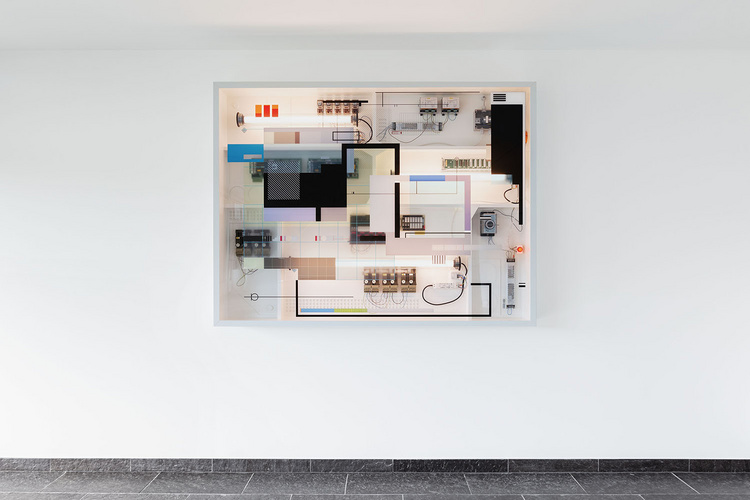
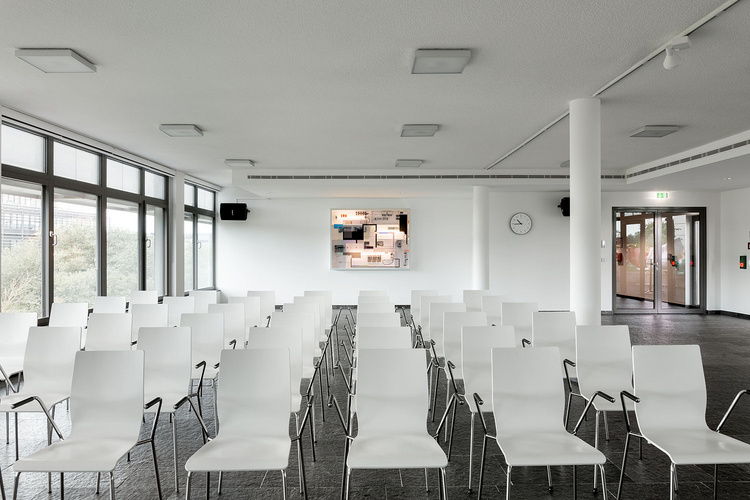
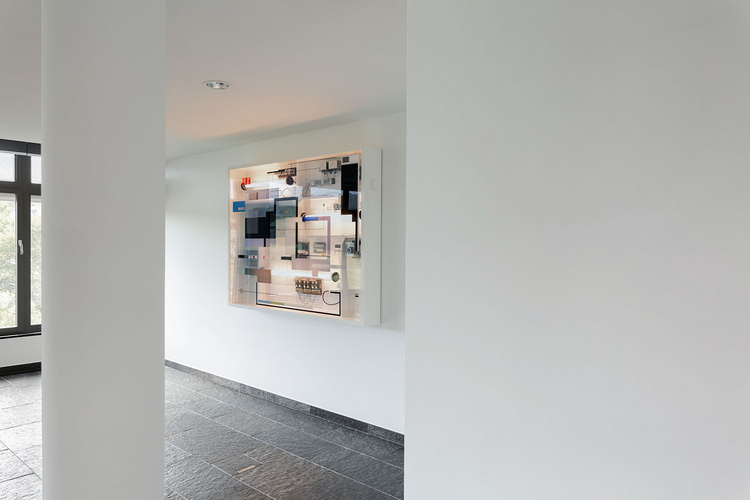
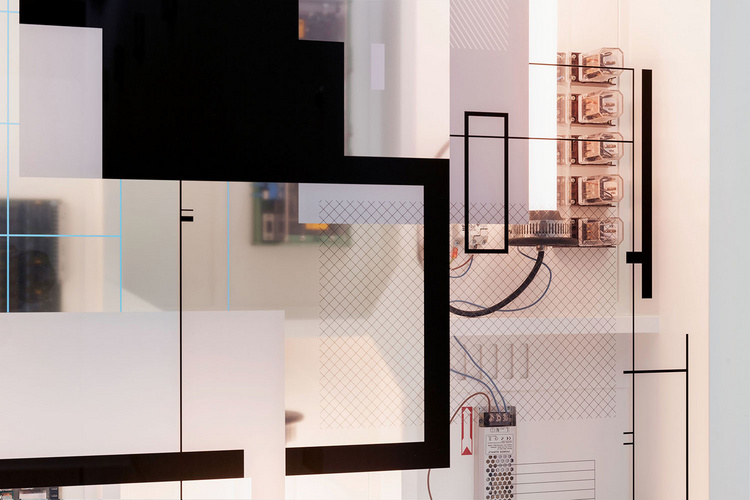

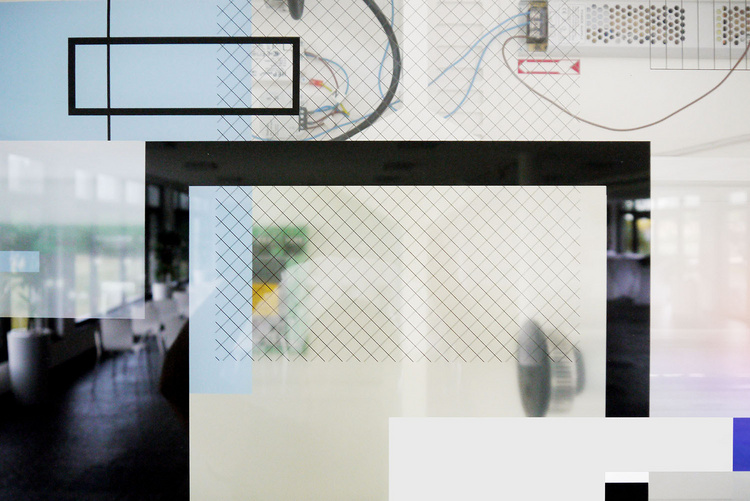
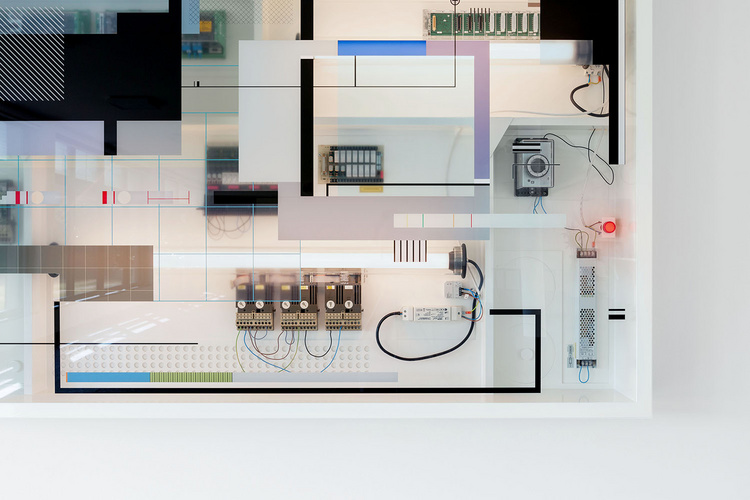
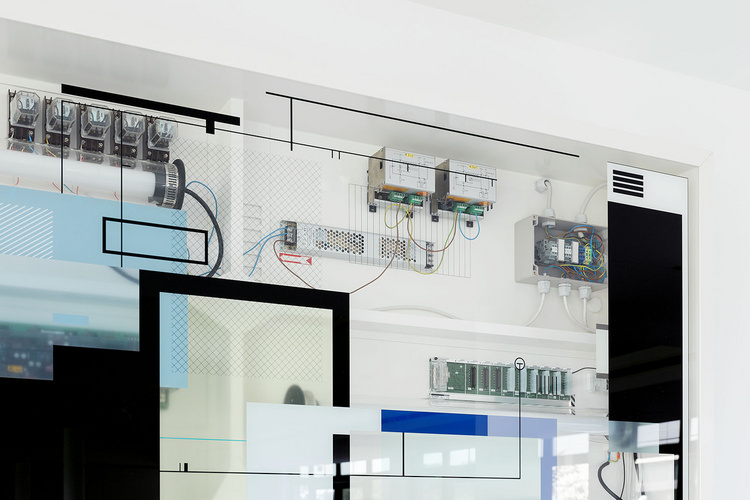
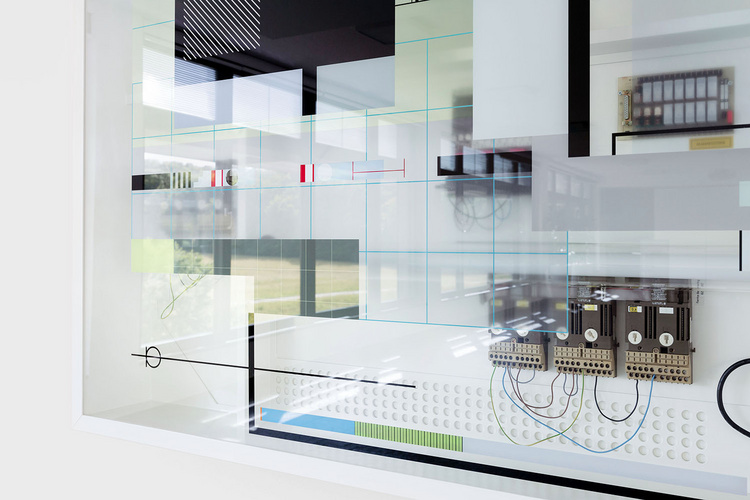


Photos: © Patty Neu & Paul Kirps